Curator: Ricard Mas
Congratulations! If you’re reading this text (and you’re not an artificial intelligence) it means you’re still breathing. So far… because living means inhabiting the brief time between birth and death.
Art is inseparable from human expression. It reveals to us the innumerable discourses and reflections of the soul regarding its limits. This online exhibition is, therefore, limited to showing a few cases from the infinite variety of ways of portraying death, through works of a very different nature, most of which can be visited publicly in the 22 institutions that make up the Art Museums Network of Catalonia.
The people depicted in these works are no longer breathing. Neither are the artists who created them. But they still talk to us. And they ask us a question that goes beyond our concern for finiteness: Am I?
Afraid to Die
The fear of dying keeps us alive. Numerous elements remind us of our finiteness, the most characteristic of which is the skull. Skulls have no face and materialise the loss of identity
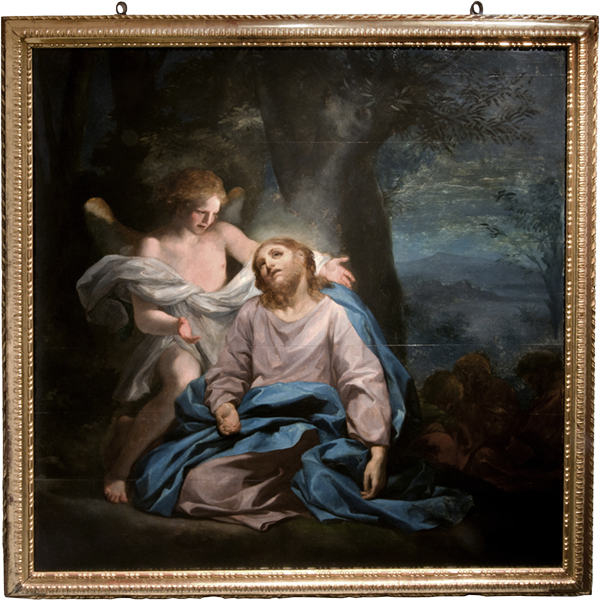
Antonio Rafael Mengs: Prayer in the Garden, 1774-1776. Oil on wood, 185 x 185 cm. Lleida Diocesan and County Museum. © Museu de Lleida. Photo: Jordi V. Pou.
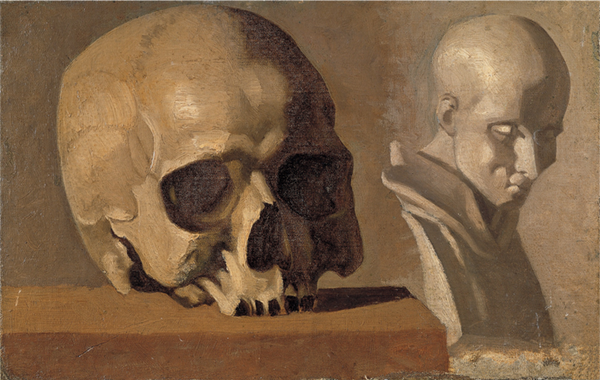
Pablo Picasso. Memento mori, Oil on canvas glued to cardboard, 24 x 37.8 cm. Palau Foundation, Caldes d’Estrac.
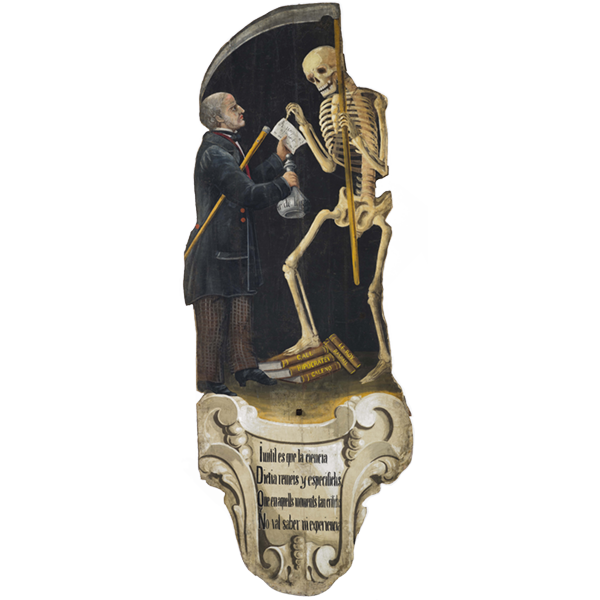
Anonymous. Untitled, 19th century. Oil on canvas glued to sawn wood, 267 x 96 x 9 cm. Manresa County Museum. © CRBMC Centre de Restauració de Béns Mobles de Catalunya.
Emblem that is part of a novena (prayers offered on nine consecutive days for a deceased person), in this case, on the limits of medicine: “It is useless for science / To dictate remedies and medicines / That in those critical moments / Neither knowledge nor experience is valid.”
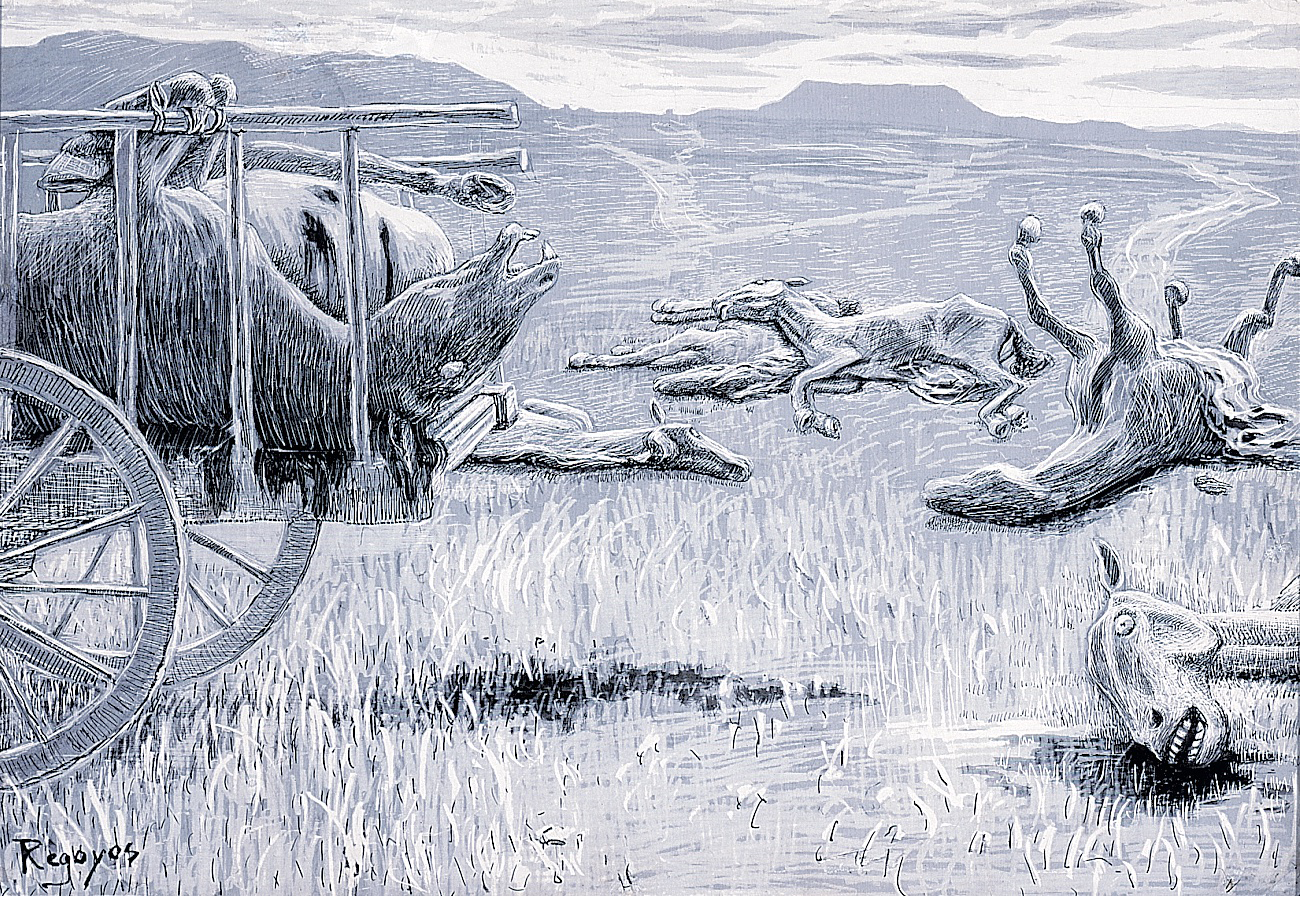
Darío de Regoyos. Víctimas de la fiesta, 1894. Ink and grattage on paper, 31 x 45 cm. Abelló Museum, Mollet del Vallès.
In War
After pandemics, war is the leading cause of mass death. Unfortunately, the evolution of science, instead of favouring the human condition, has made it much worse by placing itself at the service of war. The two World Wars are a paradigmatic case of this.
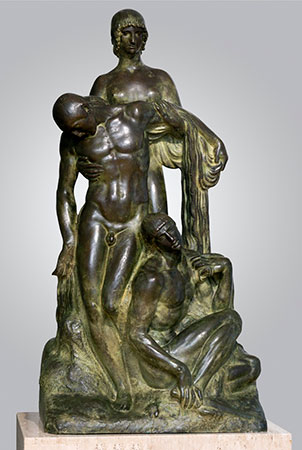
Julio Antonio. Planned Monument to the Heroes of Tarragona, 1916. Bronze, 134 x 69 x 50 cm. Tarragona Museum of Modern Art.
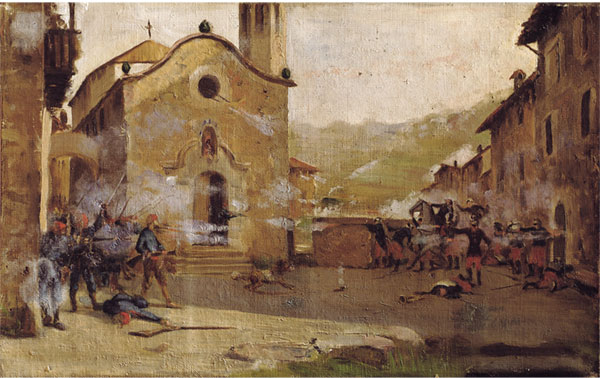
Marian Vayreda i Vila. Fighting in the Square, c. 1876. Oil on canvas, 29 x 46 cm. Museum of La Garrotxa, Olot.
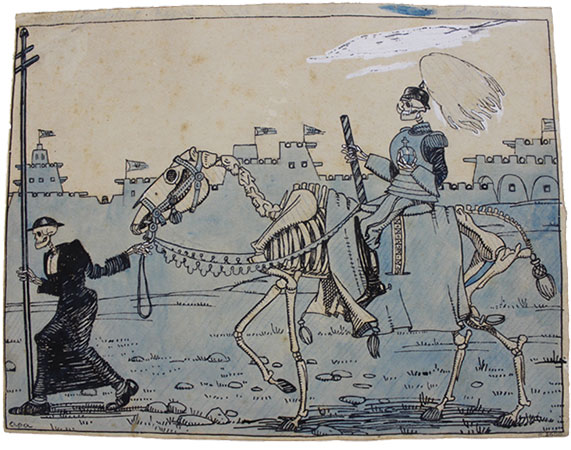
Feliu Elias. The Walk of Death in Disguise, 1913. Ink and gouache on paper, 25 x 32 cm. Abelló Museum, Mollet del Vallès.
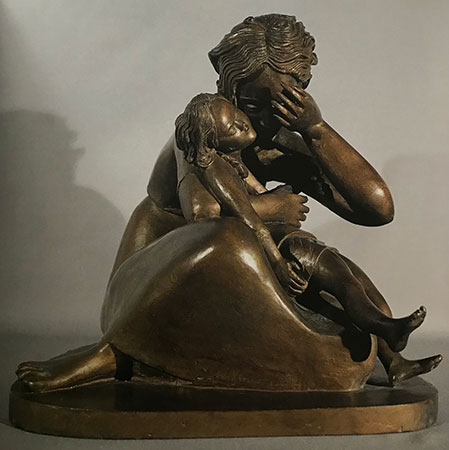
Apel·les Fenosa. Lleida, Bronze, 43,5 x 43,5 x 40,5 cm. Museu Apel·les Fenosa, El Vendrell.
With Great Drama
There are works that focus intensively on attracting attention. They are sensationalist, outrageous and intensely dramatic. They are scenic paintings from which one can imagine a certain narrative. And there is nothing more dramatic than a well-tied death.
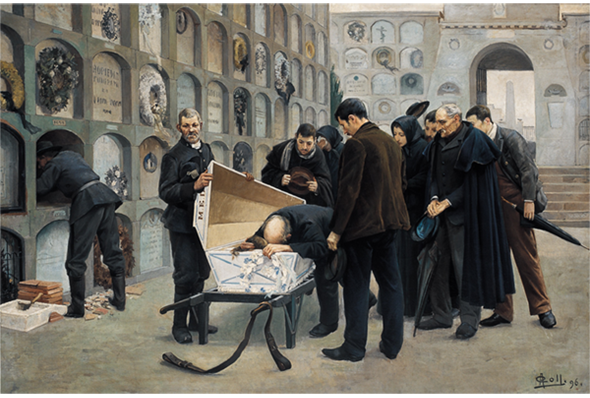
Antoni Coll Pi, See You Later, Oil on canvas, 145 x 217 cm. Sabadell Museum of Art.
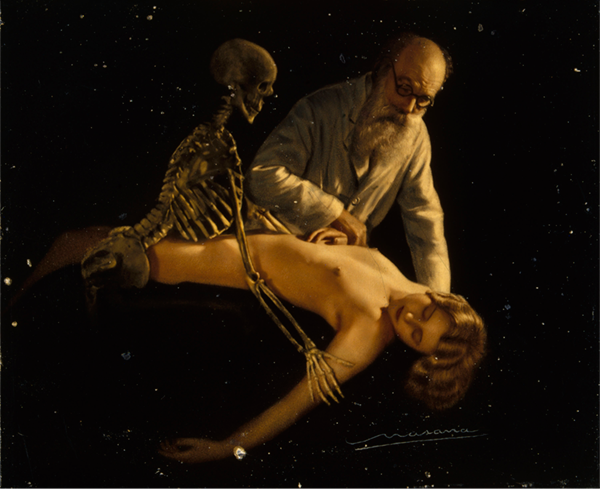
Josep Masana. Between Life and Death, 1920-1940 (edition around 1957-1960). Photograph coloured with the Flexichrome process, 16 x 19.2 cm. National Art Museum of Catalonia, Barcelona.
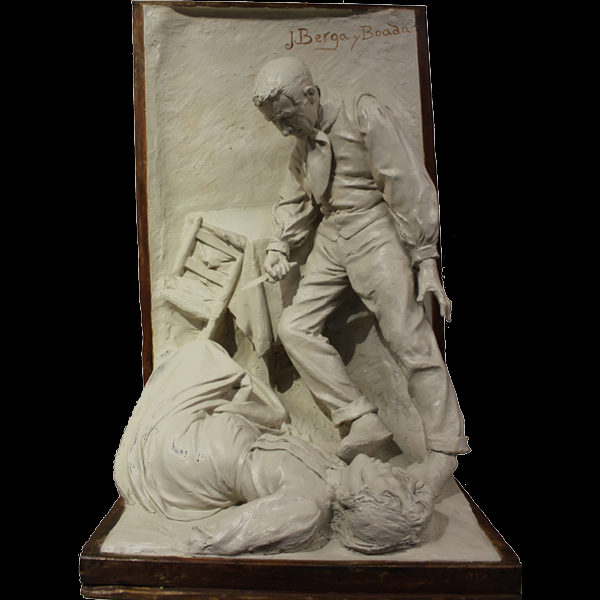
Josep Berga i Boada. Such Are the Consequences… (the stabbing), between 1900 and 1907. Plaster, 100 x 51 x 60 cm. Museum of La Garrotxa, Olot.
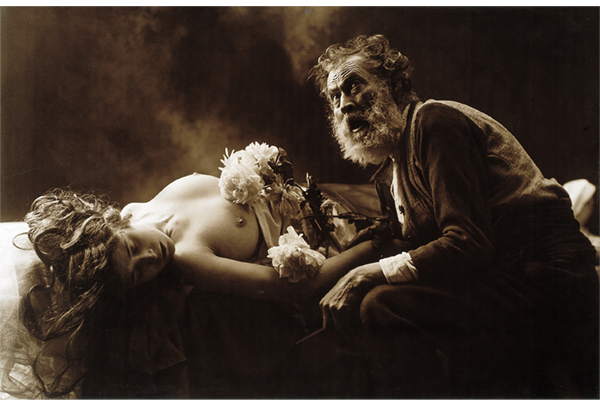
Joan Vilatobà Fígols. Where in Heaven Will I Find You?, c. 1904-1905. Tinted bromide paper, 62.5 x 93.5 cm. Sabadell Museum of Art.
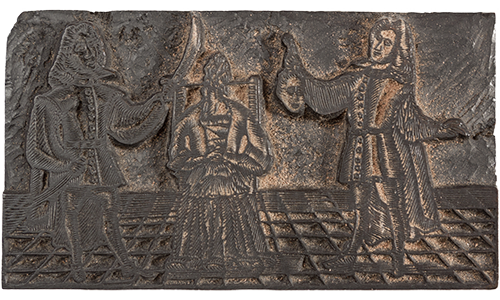
Beheading of a Woman, 18th-19th centuries. Woodcut, 7.5 x 11.5 x 2 cm. Girona Provincial Government Art Collection, Girona Museum of Art. Photo: Rafel Bosch.
Desiring
The twinning of desire and death became fashionable in Europe during Romanticism. Giacomo Leopardi wrote: “Fratelli, a un tempo stesso, Amore e Morte / Ingenerò la sorte” (Brothers, at the same time, Love and Death / were engendered by destiny). Later, Freud theorised about the two great human desires: that which leads to death and that which drives life, including sexuality.
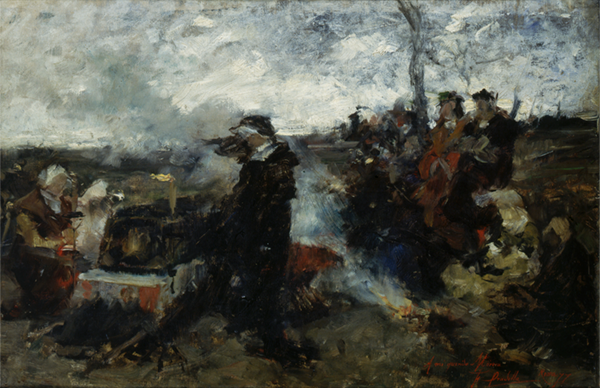
Francisco Pradilla y Ortiz. Doña Juana la Loca (sketch), 1877. Oil on canvas, 38.6 x 59.1 cm. MORERA. Museu d’Art Modern i Contemporani de Lleida collection
Queen Joan of Castile went mad after the sudden death in 1506 of her husband, Philip of Habsburg. Between Burgos, where he died, and Granada, where he was to be buried, the entourage only travelled at night. She never left the coffin and at every stop she kissed her dead husband’s feet.
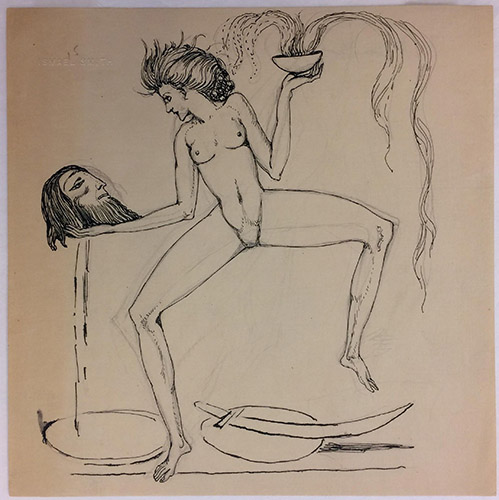
Ismael Smith. Salomé dancing, Nova York, 17/12/1924. Pencil and ink on paper, 44 x 35 cm. Donated by Enrique García-Herráiz in memory of Paco Smith. Cerdanyola Museum of Art.
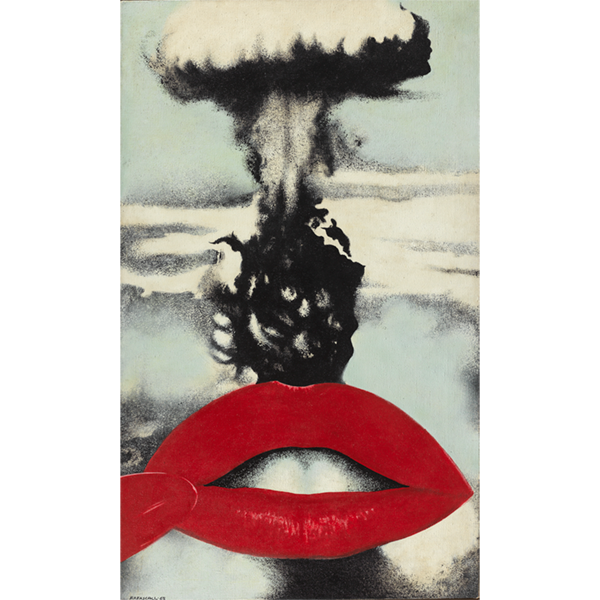
Joan Rabascall. Atomic Kiss, 1968. Acrylic on canvas, 162 x 97 cm. MACBA Collection. On loan from Barcelona City Council. © Joan Rabascall, VEGAP, Barcelona. MACBA, Barcelona.
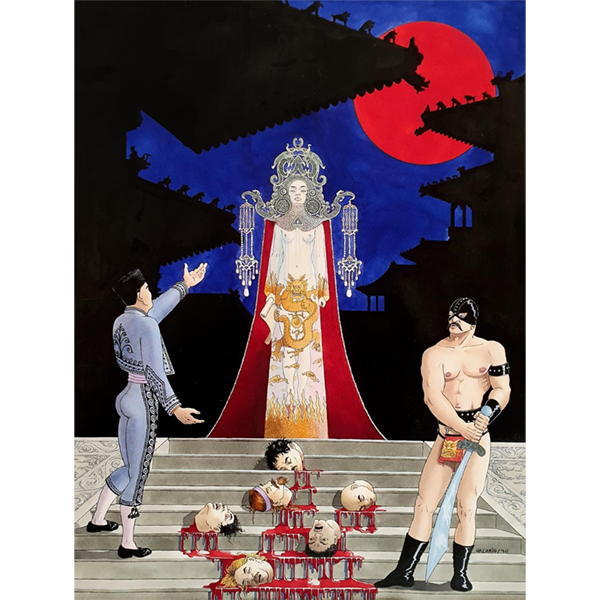
Nazario. Turandot, 1992. Ink and gouache on paper, 44 x 35 cm. Generalitat of Catalonia National Art Collection, Cerdanyola Museum of Art.
Memorably
Some deaths are particularly famous. Most are myths, legends and religious milestones. One of the consequences of death may be oblivion, but in these cases the narrative is so powerful that it has endured for millennia.
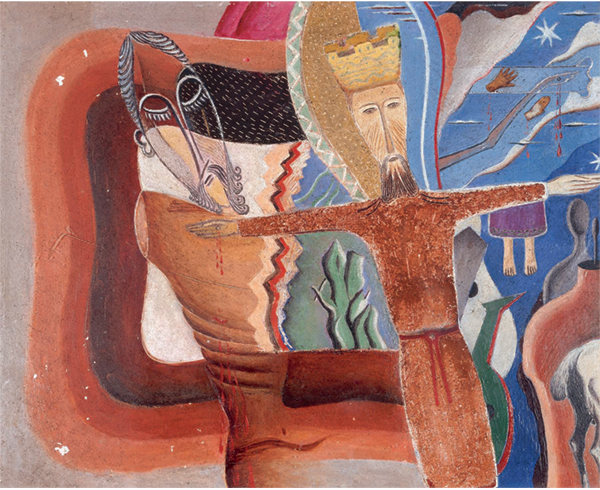
Joan Massanet Juli. Pantocrator, 1929. Painting on board, 39 x 49 cm. Museum of L’Empordà, Figueres.
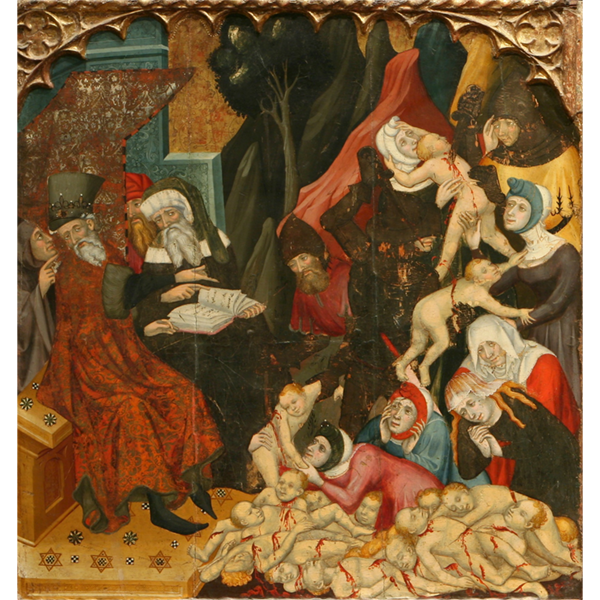
Lluís Borrassà. Panel of “The Slaughter of the Innocent”, from the Franciscan altarpiece of the old convent of Santa Clara in Vic, 1414-1415. Tempera painting on wood, 130 x 128 cm. Episcopal Museum of Vic.

Josep Ginés. The Innocent Saints, Polychrome carving, 26.5 x 24 x 21 cm. Frederic Marès Museum, Barcelona.
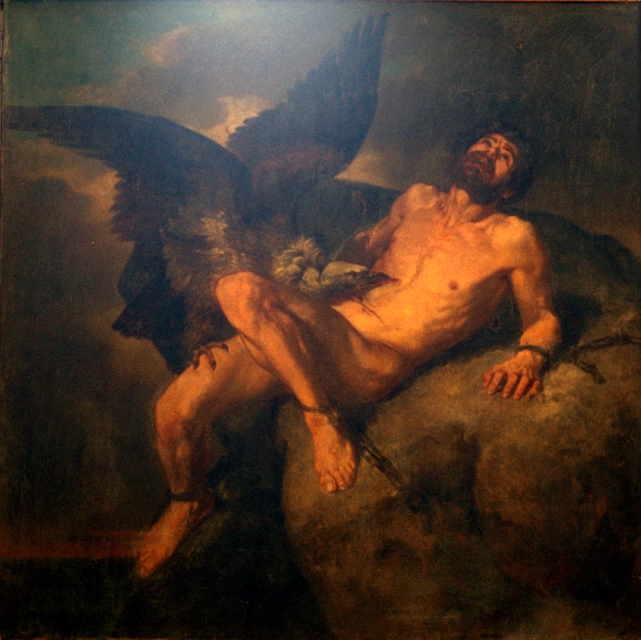
Francesc Sans Cabot. Prometheus, 1858. Oil on canvas, 162 x 162 cm. MORERA. Museu d’Art Modern i Contemporani de Lleida collection.
In bed
A bed is not just a piece of furniture to sleep on, it is also a place to be born, to die, to reproduce… and to recover from an ailment. Many creators have discovered their vocation during childhood or adolescence after a long illness that forced them to stay in bed.
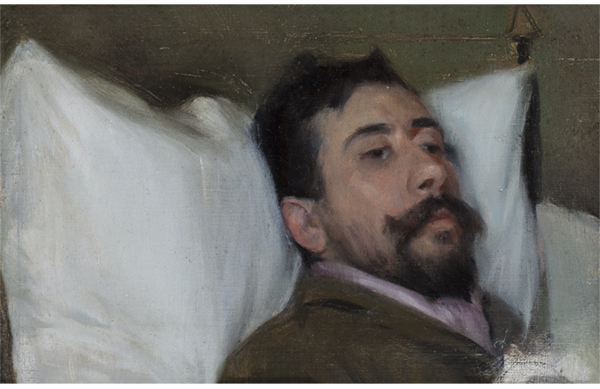
Santiago Rusiñol i Prats. Ramon Canudas, Ill in Bed, 1892. Oil on canvas, 16.5 x 25.8 cm. Cau Ferrat Museum, Sitges Heritage Consortium.
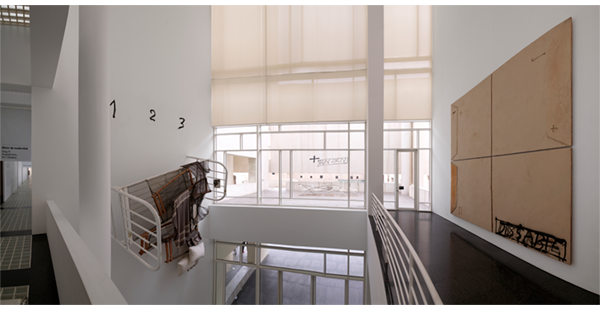
Antoni Tàpies. Rinzen (Sudden Awakening), 1992-1993. Various materials, various sizes. MACBA Collection. MACBA Foundation. Donation from the Repsol Foundation. © Comissió Tàpies, VEGAP, Barcelona. MACBA, Barcelona. Photo: FotoGasull.
Motu proprio
In ancient classical culture, suicide was often a mechanism for preserving honour and possessions. With the spread of Christianity, the depiction of this practice was largely ignored until Romanticism, when artists once again turned to the subject and even the practice.
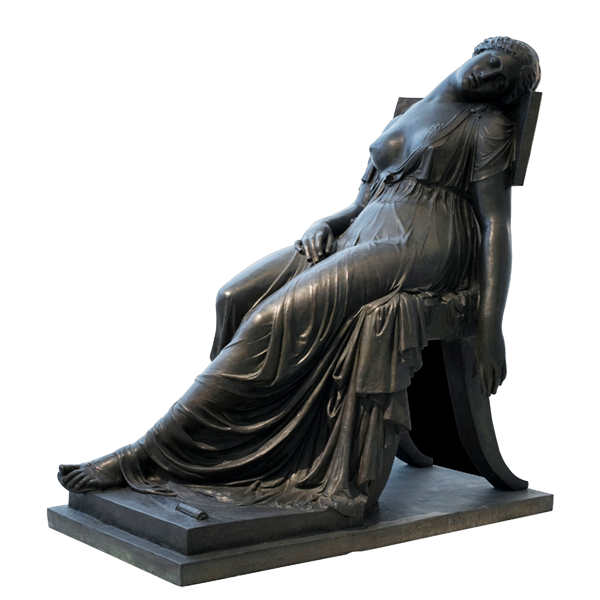
Damià Campeny. Lucretia, 1803. Bronze, 131.4 x 66.7 x 130.6 cm. National Art Museum of Catalonia, Barcelona.
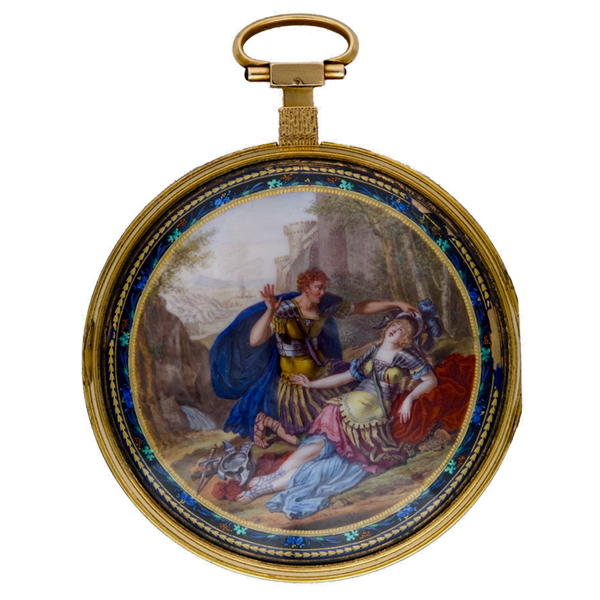
Decombaz. Pocket Watch. Ginebra, 1780-1820. Copper alloy, engraved and gilded, enamel, steel and glass, 8.9 x 6.5 x 2.4 cm. Barcelona Museum of Design.
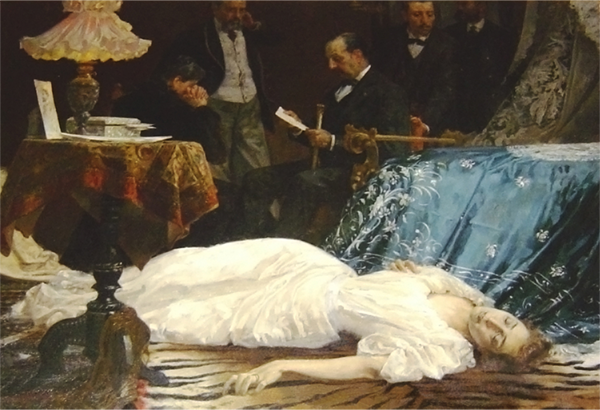
José Garnelo. Suicide for Love. 1891-1892. Oil on canvas, 132 x 180 cm. Víctor Balaguer Library-Museum, Vilanova i la Geltrú.
Very Still Lifes
Before the emergence of the various photographic techniques and their common use, people had very few ways of preserving the image of their loved ones once they were no longer with them. Whenever possible, an urgent portrait was drawn or painted.
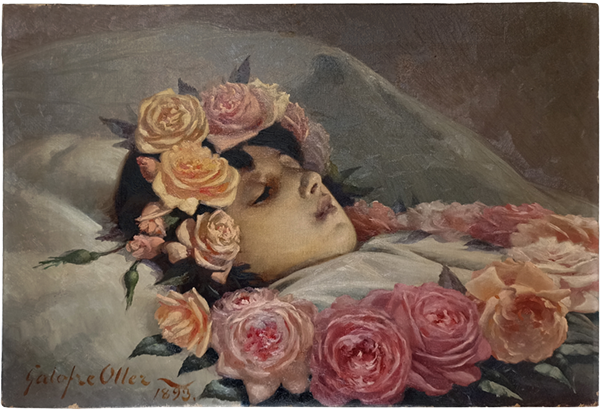
Francesc Galofré Oller. Dead Child, 1893. Oil on canvas, 37,3 x 53,9 cm. Valls Museum. On loan from Jesus Saumell Zafra, prince of Achaea.
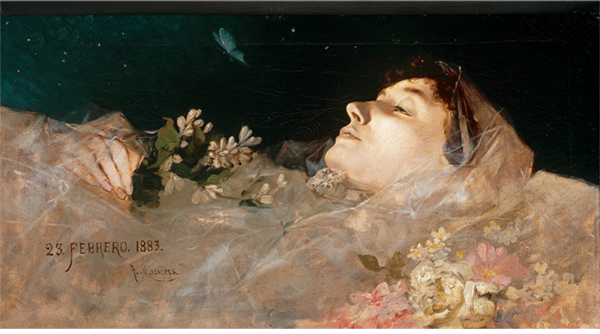
Francesc Masriera Manovens. Portrait of the Deceased Elisa Masriera Manovens. 1883. Oil on canvas, 38 x 72 cm. Museum of L’Empordà, Figueres.
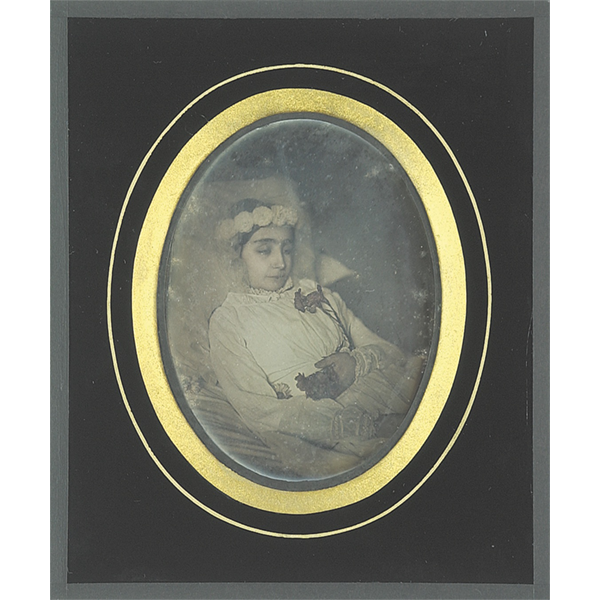
Postmortem Portrait of a Girl. 1845-1860. Daguerreotype, 9.5 x 8.2 x 2 cm. Frederic Marès Museum, Barcelona.
With the obligatory whiteness as a symbol of purity in cases of child death, the daguerreotype would replace the painting as an urgent reminder of a deceased person. With the growth of photography, people would have many opportunities to accumulate images and be remembered.
Topographies of memory
Another technique for preserving the memory of the deceased was to make a mask of their face before burying them. In Latin persona is the name given to actors’ masks and is the origin of the word “personality”. The death mask seeks to preserve the exceptionality of an individual who is no longer with us, to summarise an essence in a face.
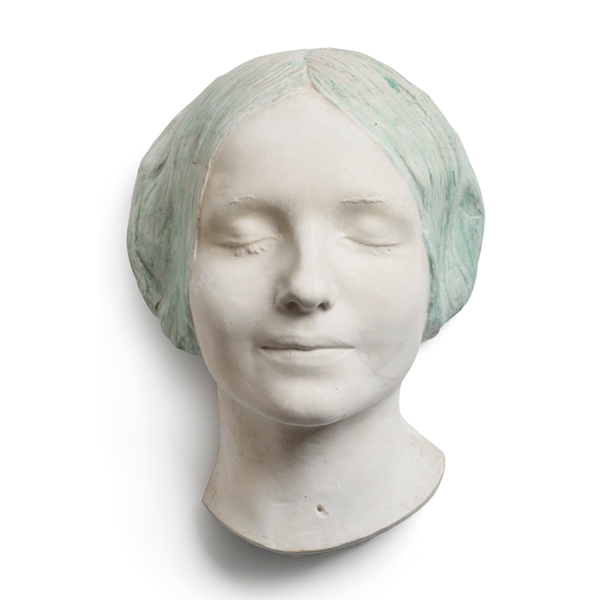
The Unknown Woman of the Seine, c. 1890-1894. Tinted plaster, 31.2 x 21.6 x 16.2 cm. Cau Ferrat Museum, Sitges Heritage Consortium.
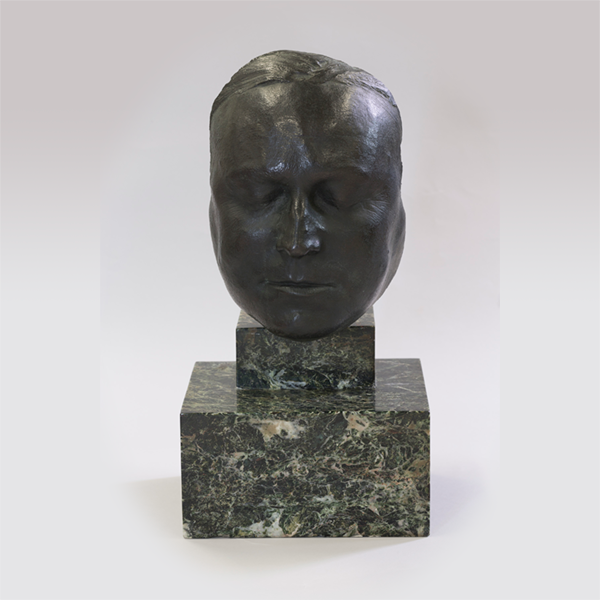
Pablo Gargallo. The Mask of Isidre Nonell. 1911. Bronze, 24 x 16 x 12.5 cm. National Art Museum of Catalonia, Barcelona.
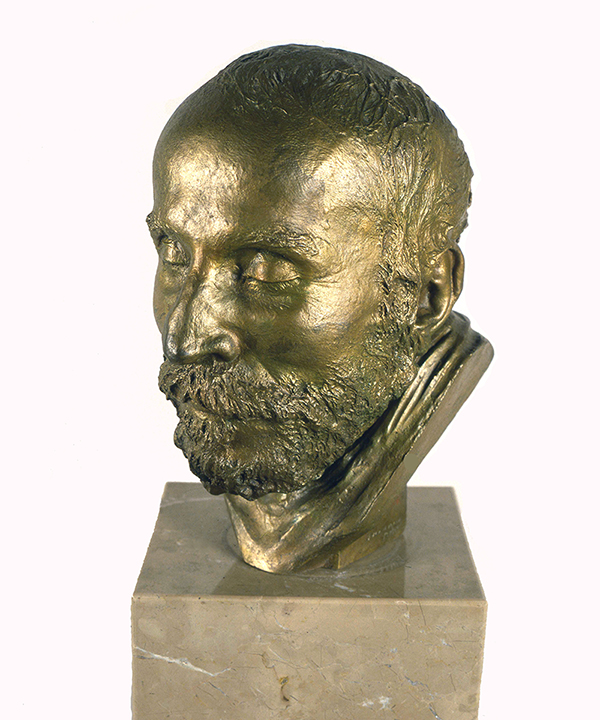
Joan Matamala i Flotats. Màscara mortuòria d’Antoni Gaudí. 1926. Metall i pedra, 30 x 12 x 24 cm. Museu de Reus.
The Cemetery of Art
Museums are sometimes cemeteries in a literal sense, as they house fragments of the dead enclosed in reliquaries, as well as whole corpses, even if they are mummified. In a more symbolic sense, a museum is a mausoleum of artistic legacies. Nevertheless, the canon favoured by museum collections conditions the freedom of contemporary creativity, which is why the futurist Marinetti advocated their destruction.
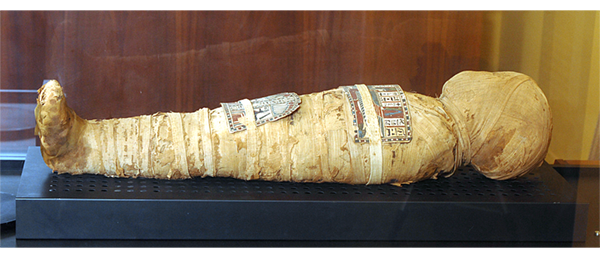
The Mummy Nesi, c. 656-567 BC. Mummified body bandaged in fabric decorated with polychrome cardboard paste panels with hieroglyphics and mythological scenes, 83 x 19 x 15.5 cm. Víctor Balaguer Library-Museum, Vilanova i la Geltrú.
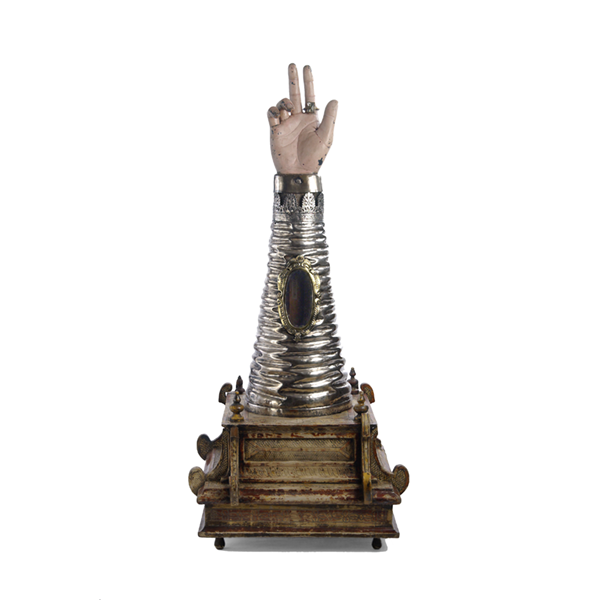
Alberto Portella. Reliquary Arm of St. Valerius. c. 1625. Cast and embossed silver arm with a wooden stand. Arm: 63 cm; hand: 19 cm; sleeve: 41 cm; stand: 20 cm. Lleida Diocesan and County Museum. © Museu de Lleida.
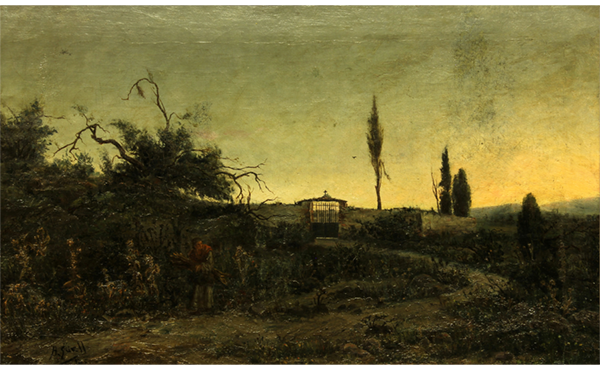
Hortensi Güell i Güell. Cemetery at Dusk. 1892. Oil on canvas, 40.5 x 65.5 cm. Museum of Reus.
Landscape painter and writer, Hortensi Güell was a follower of Modest Urgell’s late Romantic style and his melancholy cemeteries at dusk. Due to a love disappointment, Güell decided to end his life by throwing himself into the sea.
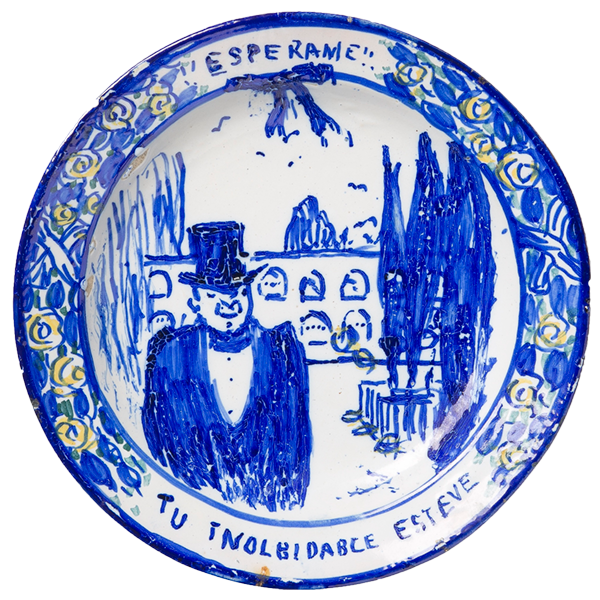
Santiago Rusiñol i Prats. Untitled. 1915. Earthenware with blue, green and yellow enamel, 3 x 27.7 cm. Cau Ferrat Museum, Sitges Heritage Consortium.
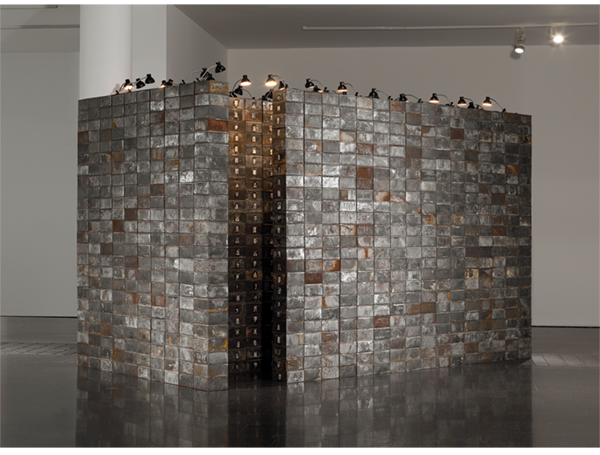
Christian Boltanski. Reserve of the Dead Swiss, 1991. Tin boxes, photography in silver salts, cardboard and electric lamps, total dimensions: 288 x 46 x 238 cm; 2380 boxes: 12.1 x 21.8 x 23.3 cm each. MACBA Collection. MACBA Foundation. © Christian Boltanski, VEGAP, Barcelona. MACBA, Barcelona. Photo: FotoGasull.
Everything that is not dead, but is not alive either…
Can there be life after death? An immaterial existence cannot be described, strictly speaking, as life. So in what words should we describe a life that has crossed the threshold of death? Can an eternal life, free of death, still be called life? What words do not say, perhaps can be read in pictures.
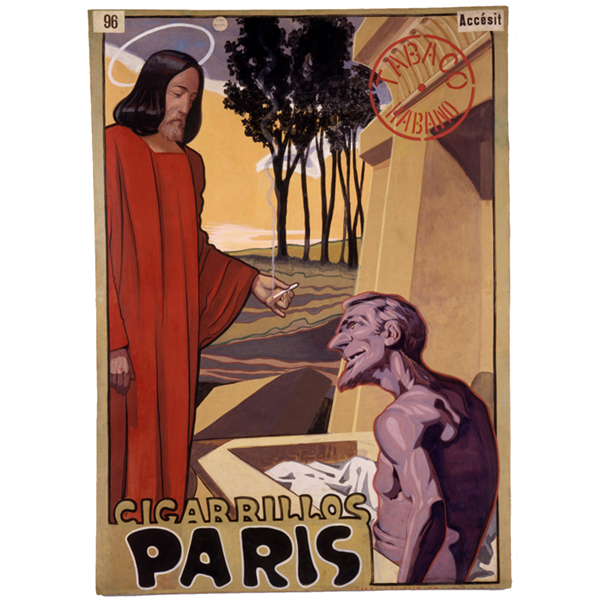
José María Cao Luaces. Get up and smoke (slogan). Cigarrillos París,1900. Tempera, watercolour on paper, 122.5 x 88 cm. Museum of La Garrotxa, Olot.
“Lazarus, come forth” (John 11: 43). With this forceful instruction, Jesus resurrected the brother of his friends Martha and Mary. José María Cao makes fun about this famous passage by resurrecting a dead man to whom Jesus offers a Paris brand cigarette.
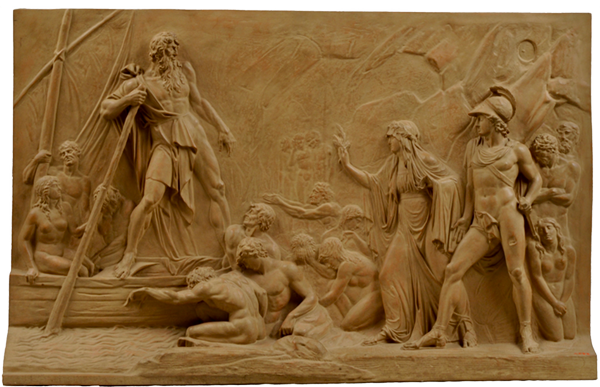
Antoni Solà. Aeneas and the Sibyl of Cumae visit the Styx. 1801. Painted plaster, 49 x 80 x 15 cm. Frederic Marès Museum, Barcelona.
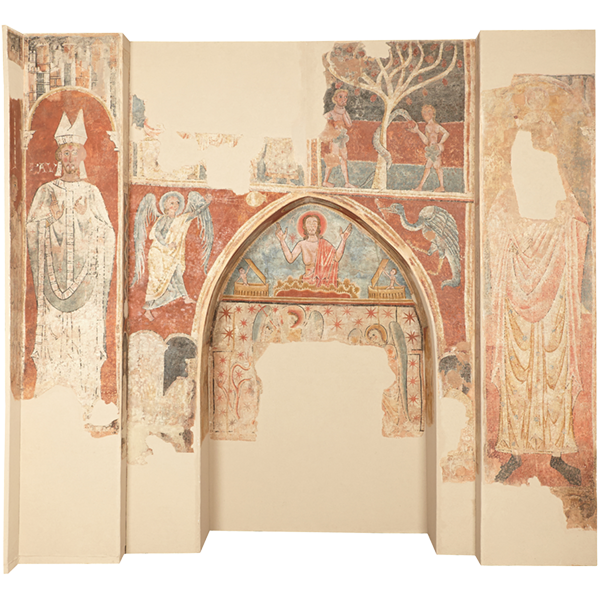
Wall decoration, second half of the 13th century. Fresco painting, 400 x 432.5 x 126 cm. Solsona Diocesan and County Museum.


